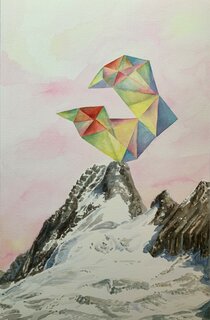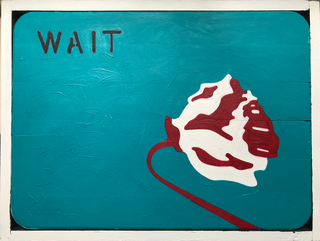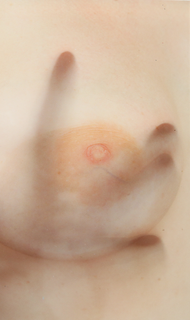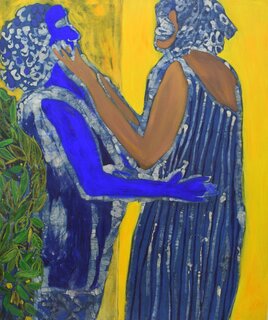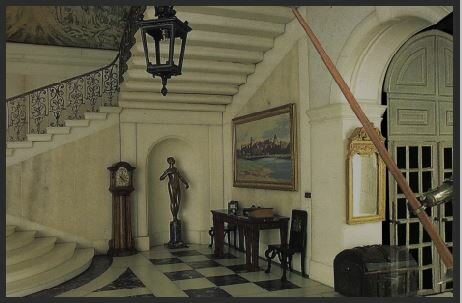
Suky Best has a long-running fascination with the clash occasioned by encounters between well-groomed domestic interiors and nature run wild. In The Journey Home (1999) she ‘wanted to make an image as if the room was being menaced by vegetation…Trees might burst through windows to claim back their own.’ She is also inspired by specific buildings, as in Walking Meditation (2000) made in and for Cleeve Abbey, a thirteenth century Cistercian ruin in Somerset. A third concern is with the way the simplification of an image can disturb perception. This is achieved in the video series 'Wild West' (2005), made in collaboration with Rory Hamilton, in which a group of cowboys on horses riding across a plain is reduced to a shimmering volatile bock of colour from which all other information has been removed.
In 'At Betty’s House' (2012) the quantity of information is further reduced, so that an environment somewhere between a room and its plan and elevation is realised. The spaces are constructed from a combination of images of stately homes and Queen Mary's doll's house. With the floor beneath carpets removed, the latter seems to take on mass, projecting assertively into the void that separates it from the viewer, and throughout the piece the removal of information, combined with the way we fly through the spaces and between objects, generates multiple ambiguities and conflicts of scale; after leaving a large room we encounter a set of coffee and tea pots, beyond which lies a group of lemons. The way these elements are disposed was inspired in part by the still lives of the seventeenth century Spanish painter Juan Sánchez de Cotán, whose invariably front or top-lit subjects: melons, cabbages, quinces, similarly hang in impenetrably dark spaces. As Betty’s pots are approached their cut-out nature becomes blatantly visible, followed by the lemons, which resolve into the matrices of their constituent colours: cyan, magenta, yellow. Thus we are shifted from one kind of seeing to another, one level of matter to another, from the image of a thing to its material constitution, in a single continuous sweep. Simultaneously our scale has shrunk from human sized to miniature as the lemons loom over us. There is perhaps a link back here to Best’s enthusiasm for cowboy iconography, in that the sensation evoked is reminiscent of the common scenario in Western movies where a group of riders passes a narrowing defile (just before the Indians attack).
For Best the work ‘refers to the interior spaces of computer games and their first person point of view’, and although the piece is structured loosely round alternating views of corridors and object groupings, the whole is constructed as a continuous fly-through. The camera finds a path between all these contrasting elements, unifying everything it encounters into a sequence of surfaces to be negotiated. But this unifying process also generates the many anomalies of scale and texture that reveal the nature of the work’s construction. Here, perhaps, one might think of the way the inexperienced gamer finds himself bumping against the pixilated boundary wall of the game’s universe. But although gaming environments are often hostile and dangerous, they are never uncanny, as they are in Betty’s house, which the humans have abandoned, leaving an eerily empty scene reminiscent of that described in the story of the Mary Celeste. Text by Nicky Hamlyn.
